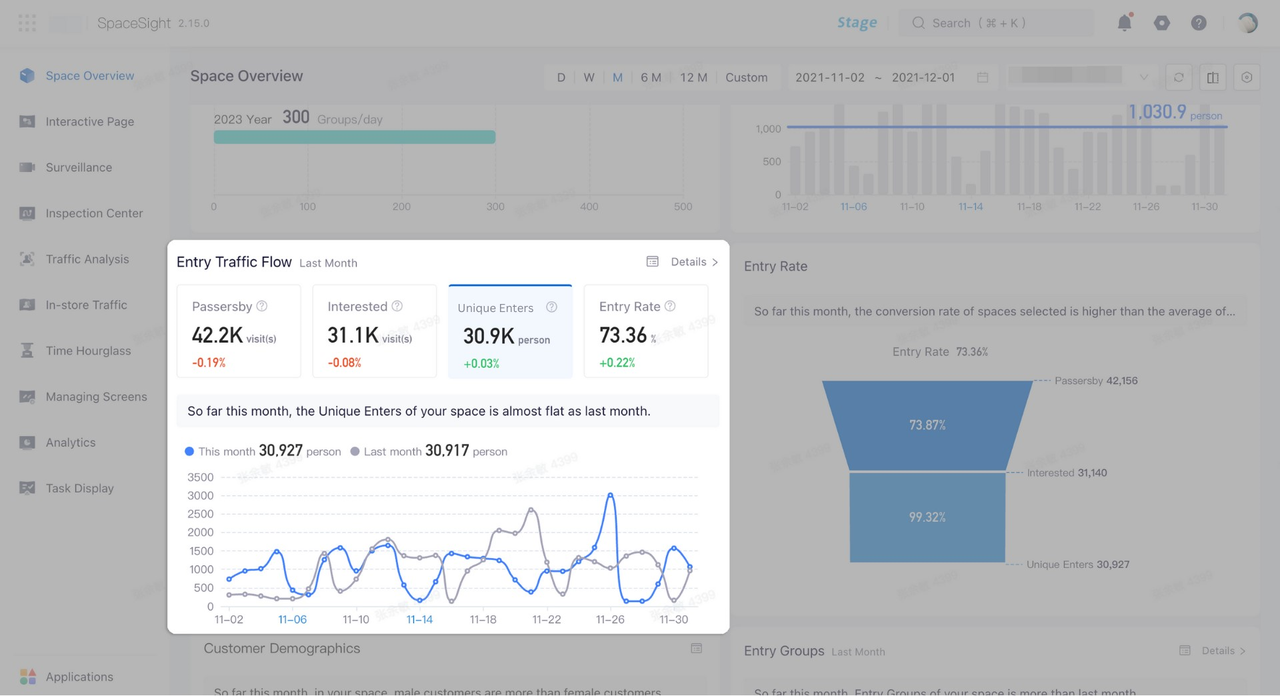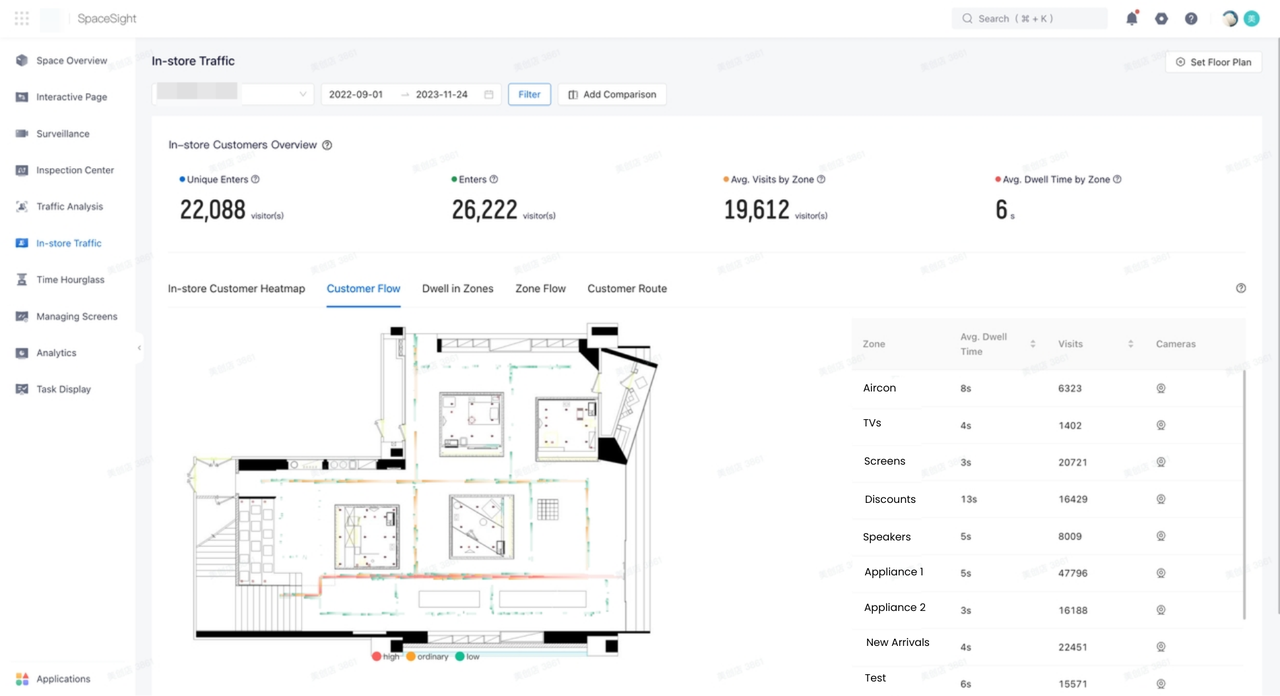In today’s rapidly evolving retail landscape, understanding customer behaviors and preferences is crucial for business success. One of the key tools at the forefront of this understanding is footfall analytics. This technology not only offers insights into how many people visit a store but also dives deeper into how they interact with the space. This article explores footfall analytics, its importance, and how it can be leveraged to improve customer service.

Footfall analytics is a valuable tool for retailers, allowing them to gain insights into customer traffic patterns, peak visiting times, dwell times within store areas, and the overall customer journey. This technology utilizes advanced sensors and cameras to collect and analyze data on the number of people entering and moving around a retail space, providing retailers with a comprehensive understanding of their customers.
1. Gain Deeper Insights into Customer Behavior: Footfall analytics can provide comprehensive insights into how customers interact with a store. This data is essential for uncovering customer shopping patterns, preferences, and behaviors.
2. Data-driven Decision Making: Real-time footfall analytics provides retailers with the opportunity to make informed decisions about store layout, product placement, staffing needs, and marketing strategies by leveraging the data from footfall analytics.
3. Optimized Store Performance: analyzing footfall data can help optimize store performance by assisting with inventory management and scheduling staff during peak hours.
4. Improve Customer Experience: By understanding customer flow and behavior, retailers can tailor the shopping experience to meet customer needs and expectations, leading to increased satisfaction and loyalty.
1. Personalized Customer Experience: By understanding the areas of the store that receive the most footfall, retailers can tailor their displays and product placements to better meet customer interests and needs. This level of customization enhances the shopping experience, making it more personal and engaging for the customer.
2. Efficient Staff Allocation: Footfall analytics provides data on peak times and customer flow patterns, enabling retailers to allocate staff more efficiently. This ensures that there are enough employees on the floor to assist customers during busy periods, reducing wait times and improving overall service quality.
3. Optimized Store Layout and Product Placement: By analyzing which areas of the store attract the most customers, retailers can optimize their store layout and product placements to enhance visibility and accessibility. This not only improves the shopping experience but also can lead to increased sales.
4. Proactive Response to Customer Needs: Real-time footfall data allows staff to respond proactively to changes in customer flow, addressing any potential issues before they impact the customer experience. For instance, if an area becomes too crowded, staff can be redirected to manage the flow and ensure a comfortable shopping environment.
Entry-level Footfall Data Insights
SpaceSight's entry-level footfall data includes store passersby, unique enters, interested customers and entry rate. Whale ReID technology is implemented in footfall data collection and is able to count unique customers entering the store and deduplicate repeat customers as well as invalid footfall data (such as staff, deliveryman and couriers). It significantly improves the accuracy of entry-level footfall data collection.

Customer In-store Behavior Insights
SpaceSight's in-store footfall analysis uncovers the customers' in-store behavior and facilitates the optimization of store layout designs. The AI cameras are deployed to acquire the customers' route and analyse the customer flow data while ensuring legal compliance of data security and privacy. The popular and unpopular store areas can be seen on store heatmap by visualized customer visits number and dwell time. It allows Brand M to make data-driven decisions on store layout design and product display and enhance customer experience.


80% improvement in footfall data analysis efficiency
With SpaceSight, Brands efficiently collects footfall data and directly obtains visualized customer behavior data. Footfall data is presented clearly on a single dashboard and can be analyzed across various dimensions, such as daily, weekly, monthly, and yearly. This results in an 80% increase in data analysis efficiency and facilitates data-driven decision-making.
1. Comprehensive Data Collection: SpaceSight's advanced sensors collect a wide range of data, including customer entry rates, dwell times, and movement patterns. This comprehensive data collection forms the basis for in-depth analysis.
2. Visualized Data Insights: The footfall data is not just collected but also visualized in an intuitive manner on a single dashboard. This visualization makes it easier for store managers and analysts to understand and interpret the data quickly.
3. Customized Customer Experiences: By providing real-time data on customer preferences and behaviors, Whale SpaceSight enables stores to tailor the shopping experience to individual needs, thus enhancing overall customer satisfaction.
4. Multi-dimensional Analysis: Brands can analyze footfall data across various timeframes - daily, weekly, monthly, and yearly. This flexibility allows for a more nuanced understanding of customer trends and patterns.
5. Predictive Analytics for Future Planning: The efficiency in data analysis also extends to predictive analytics. By analyzing trends and patterns, brands can forecast future customer behaviors, enabling proactive adjustments in store strategies.
6. Enhanced Marketing Strategies: The insights gained from footfall data analysis allow for the development of more targeted and effective marketing strategies, leading to better customer engagement and increased sales.
- Introduction
- What is Footfall Analytics?
- Why is Footfall Analytics Important?
- How Can Footfall Analytics Improve Customer Service?
- Why Whale SpaceSight?
- Key Results
- Introducing Echo
- Whale is part of AI Verify Foundation
- Whale Secures $60 Million to Expand its Enterprise AI Suite Globally
- Whale Achieves CMMI Maturity Level 5 Certification, Demonstrating Excellence in Software Development Processes
- Introducing Retail AI Copilot : Your new AI assistant for your physical spaces
- Whale has been accredited by Singapore's Infocomm Media Development Authority (IMDA)
- How GIORGIO ARMANI Redesigned Success Metrics Across Multiple Stores
- 3 Ways to Improve Conversion Rate for the Automotive Industry
- How SpaceSight Works in Standardizing and Improving Operational Efficiency for Car Workshop
- How GXG Leveraged Footfall Analytics for Smarter Employee Management
- From Browsing to Buying: Use SpaceSight to Optimize Sales Through Product Placement
- How Supermarket Chains Improve Inspection Efficiency with Smart Technology
- Four Management Practices to Ensure Food Safety in Your Kitchen
- Build Consistent Customer Dining Experience with SpaceSight Onsite Inspection
- How SpaceSight Improved Inspection Efficiency for Chain Restaurants
- Navigating the Future of Retail with AI with OPPO Indonesia
- How to Use Footfall Analytics to Improve Customer Service
- Why Retail Managers Need Inspection Software for Store Management












 English
English















